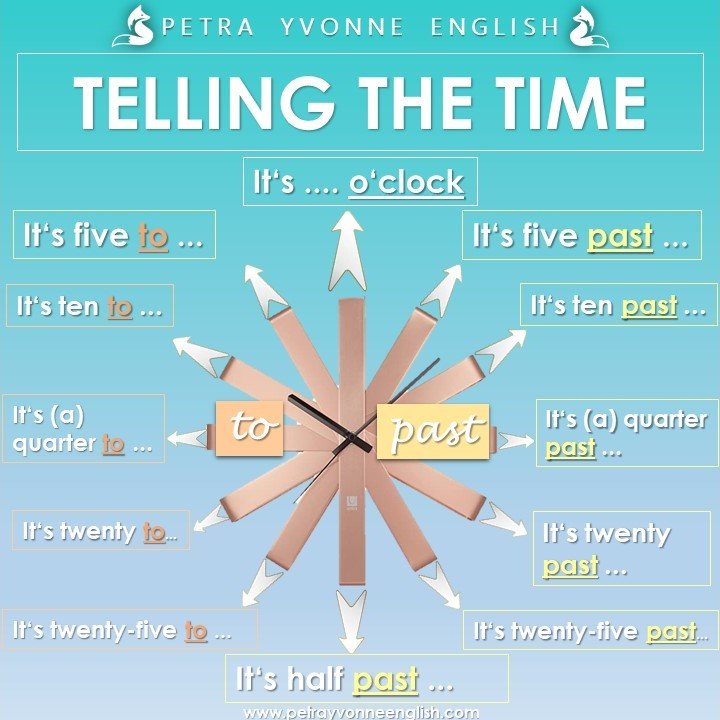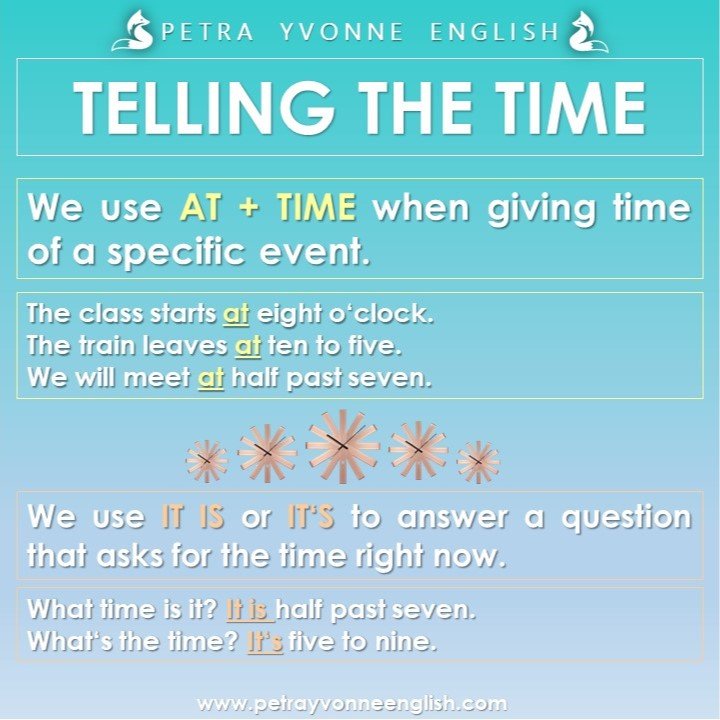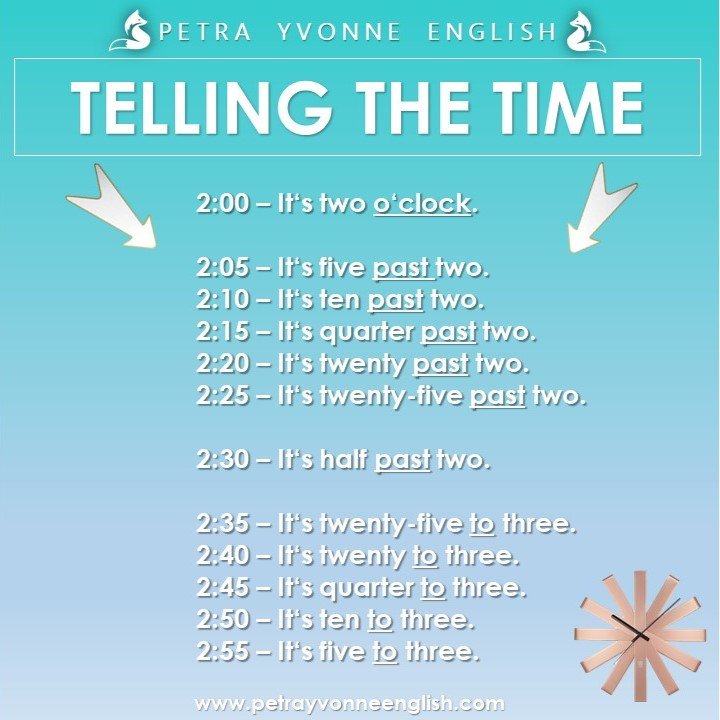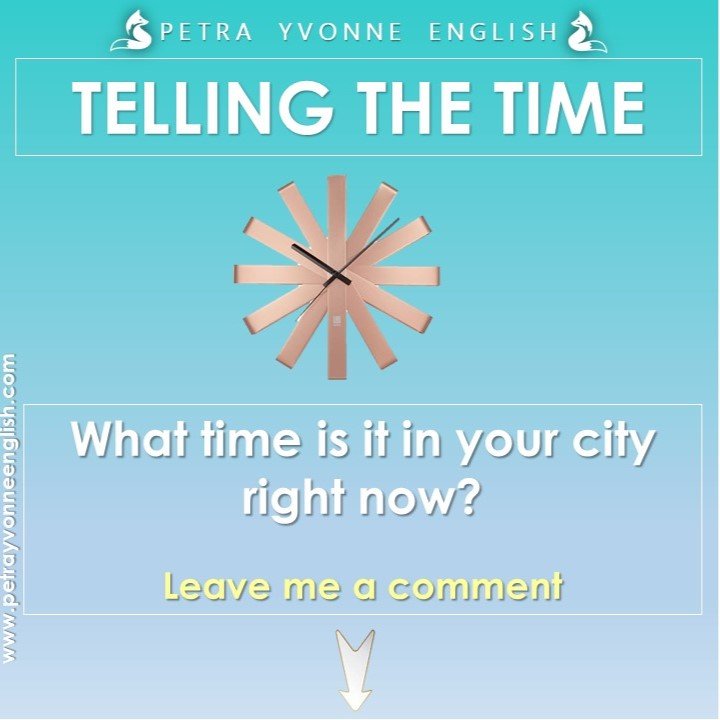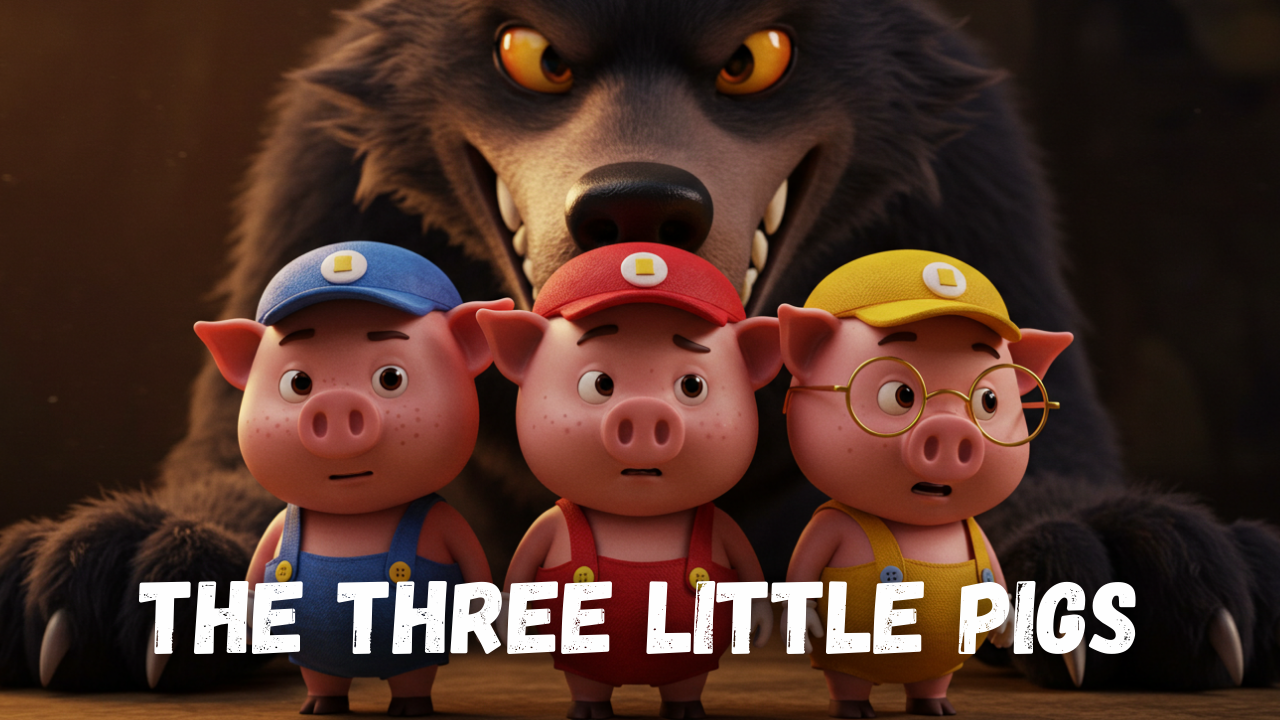

PETRA YVONNE ENGLISH
Telling the Time
We use AT + TIME when giving time of a specific event.
- The class starts at eight o‘clock.
- The train leaves at ten to five.
- We will meet at half past seven.
We use IT IS or IT‘S to answer a question that asks for the time right now.
- What time is it? It is half past seven.
- What‘s the time? It‘s five to nine.
O’CLOCK, ‘PAST‘, & ‘TO‘
- For hourly times use the phrase ‘o’clock’. For example: It is two o’clock.
- For any minute past the hour but before the half hour, use the word ‘past’.
- For any minute beyond the half hour, use the word ‘to’ before the next o’clock.
2:00 – It’s two o’clock.
2:05 – It‘s five past two.
2:10 – It‘s ten past two.
2:15 – It‘s quarter past two.
2:20 – It‘s twenty past two.
2:25 – It‘s twenty-five past two.
2:30 – It‘s half past two.
2:35 – It‘s twenty-five to three.
2:40 – It‘s twenty to three.
2:45 – It‘s quarter to three.
2:50 – It‘s ten to three.
2:55 – It‘s five to three.
12:00
For 12:00 there are four expressions in English:
- twelve o’clock
- midday = noon
- midnight
ASKING FOR THE TIME
There are two common question forms we use to ask for the timer right now.
- What time is it?
- What is the time?
A more polite way to ask for the time, especially from a stranger is:
- Could you tell me the time please?
The common question forms we use to ask at what time a specific event will happen are:
What time…?
When…?
- What time does the train to Oxford leave?
- When does the bus arrive from Dublin?
- When does the party begin?
THE 12-HOUR CLOCK & 24-HOUR CLOCK
There are two possible ways of expressing time in English. We can use the 12 hour clock or the 24 hour clock. Let’s take a look at the difference between these two formats.
The 12-hour clock
- It splits the day into two 12 hour sections = section one: lasts from midnight to noon, section two: lasts from noon to midnight
- We use ’am’ and ’pm’ to differentiate between morning and evening.
- The meaning of AM and PM is the simple abbreviation of Latin phrases.
Hours before noon are called ’am’ (AM stands for ante meridiem, which translates into English as ‘before midday’).
Hours after noon are called ’pm’ (PM is post meridiem and means in English ‘after midday’.)
11: 10 in the morning is 11:10 am (eleven ten or ten past eleven)
11:10 at night is 11:10 pm
The 24-hour clock
- The 24-hour clock is a time format where we don’t use AM and PM.
- 24-hour time format is also known as Military Time.
- This method of time telling time lasts from midnight to midnight, divided into 24 hours and is indicated by the number of hours passed from midnight, or 0 to 23.
- In Britain people often use the 12-hour clock (except for transport timetables when the 24 hour clock is always used)
- In other European countries it is common to use the 24 hour clock in social situations when writing about the time. Here the suffix ‘h’ is often used, for example 14h or 14.30h.
- When speaking, the 12-hour clock is always used.
Share this with your friends👉
© 2025 Petra Yvonne English – English online
